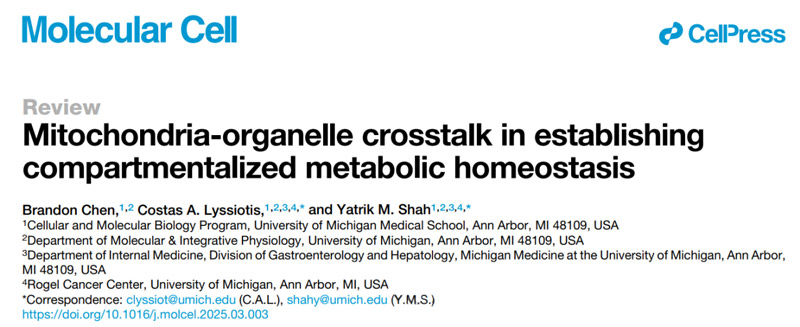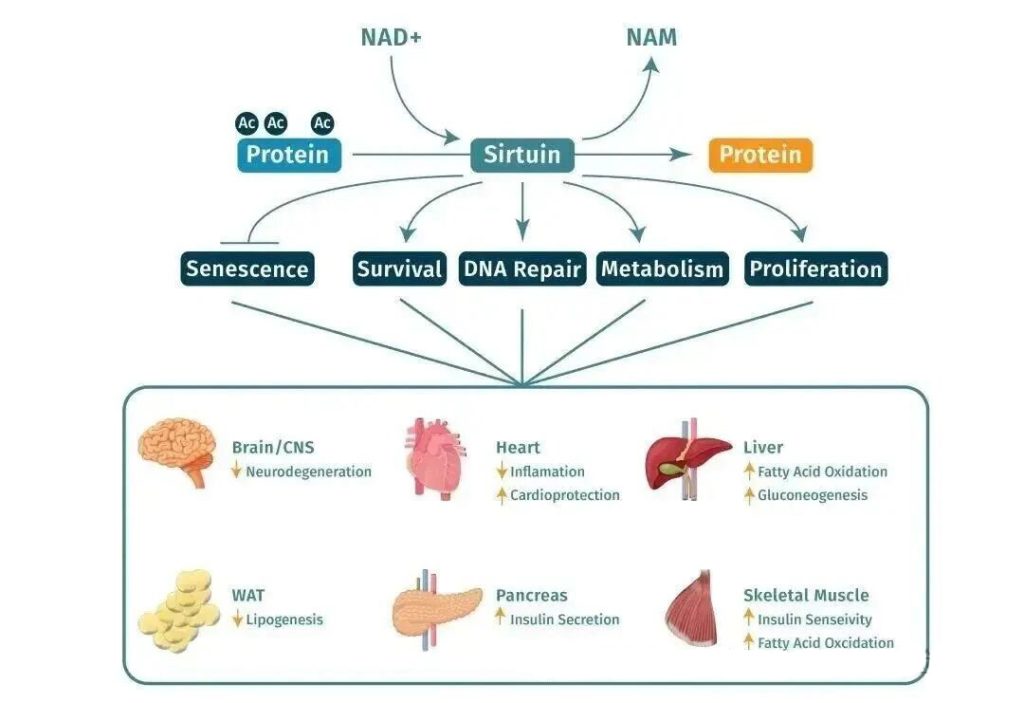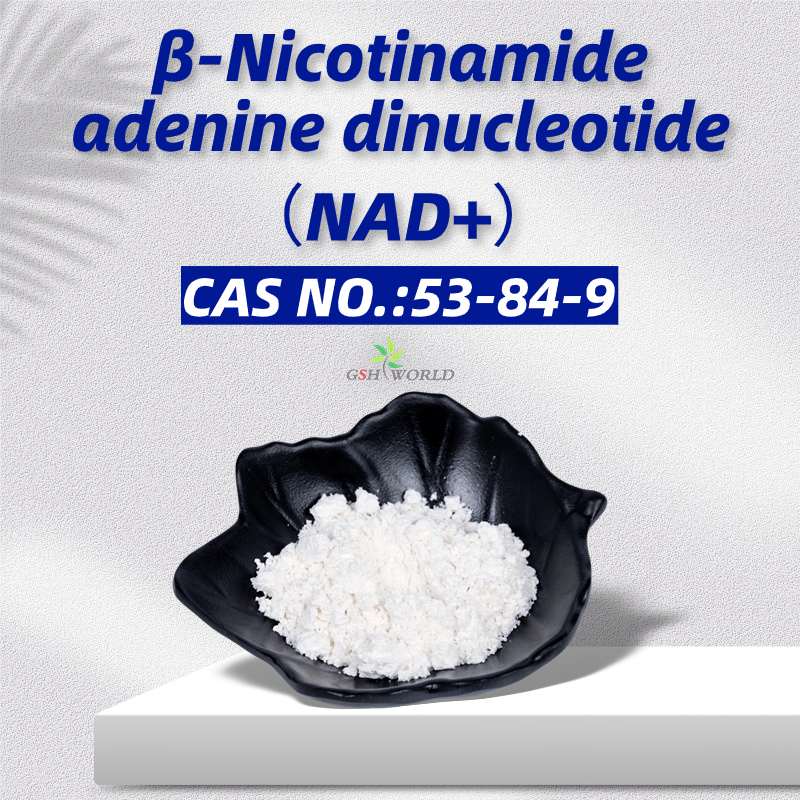NAD+ : A core molecule for health and longevity, a key force from cellular metabolism to aging regulation
In the field of anti-aging and health research, NAD+ (nicotinamide adenine dinucleotide, also known as coenzyme I) has always occupied a core position.
NAD+ participates in over 500 biochemical reactions in the human body and serves as an “indicator” for cells and body tissues
This seemingly tiny molecule is like an invisible “lifeline”, running through key links of life activities such as cellular energy supply, DNA repair, and aging regulation.
NAD+ is “power core” of cellular energy metabolism
NAD+, as an indispensable coenzyme in the process of energy metabolism, directly determines the efficiency of cellular energy conversion and thereby affects the functions of high-energy-consuming organs throughout the body.
1. “key medium” for mitochondrial energy supply, supporting organ vitality
Mitochondria are known as the “cellular energy factory”, and NAD+ is precisely the “core gear” that operates this factory.
In metabolic pathways such as glycolysis and the tricarboxylic acid cycle, NAD+ efficiently converts the chemical energy in nutrients like carbohydrates, fats, and proteins into ATP (adenosine triphosphate) that cells can directly utilize through the “electron-accepting – electron-transferring” cycle process.
When NAD+ levels are sufficient, the energy supply efficiency of mitochondria increases:
the heart can maintain a stable pumping capacity, brain neurons can efficiently transmit signals, the liver can normally metabolize toxins, and muscle strength and endurance also increase accordingly.
If the NAD+ level drops, insufficient energy supply to mitochondria will directly trigger a “chain reaction” :
Common problems among the older people, such as memory decline (insufficient energy supply to the brain), muscle loss (lack of energy in muscle cells), and weakened liver metabolic capacity (reduced detoxification efficiency), are essentially related to the imbalance of energy supply caused by NAD+ deficiency.
In the long term, they also increase the risk of chronic diseases such as diabetes and cardiovascular diseases.
2. “regulator” of metabolic balance, preventing metabolic disorders
NAD+ is not only an “energy carrier”, but also a “signal molecule” for metabolic regulation – by activating Sirtuins (deacetylase) family proteins, it precisely regulates blood sugar and fat metabolism, maintaining the body’s metabolic homeostasis
Stabilize blood sugar
NAD+ -activated SIRT1 protein can enhance cells’ sensitivity to insulin, help cells absorb glucose in the blood more efficiently, prevent long-term high blood sugar, and reduce the risk of type 2 diabetes.
Regulating fat metabolism
SIRT3, as an NAD+ -dependent mitochondrial deacetylase, can inhibit the abnormal accumulation of fat in the liver and blood vessel walls, reduce the occurrence probability of metabolic diseases such as non-alcoholic fatty liver disease and atherosclerosis, and at the same time promote the decomposition of fat into energy, helping to maintain a healthy weight.

In April 2025 The article “Mitochondria-organelle crosstalk in establishing compartmentalized” published by the team of Professor Brandon Chen from the University of Michigan in the journal Molecular Cell, a Cell sub-journal “metabolic homeostasis” indicates that the dysregulation of the interaction between mitochondria and organelles is a contributing factor to the pathogenesis of various diseases.
In other words, the crises that trigger high-risk diseases such as cancer and diabetes are essentially the collapse of the “social network” between mitochondria and organelles.
NAD+ therapy endows us with the ability to “repair cellular social relationships” by reprogramming metabolic dialogue, restarting mitochondrial autophagy, and rebuilding cross-cellular collaboration.
“Key support” for DNA damage repair
DNA is the “genetic blueprint” of a cell, and its integrity directly determines the survival and function of the cell.
In daily life, factors such as ultraviolet radiation, exposure to toxins, and aging can all cause damage to DNA, including single-strand breaks and double-strand breaks.
If the damage cannot be repaired in time, it will cause cell mutations, aging and even cancer.
NAD+ is precisely the indispensable “raw material” and “regulator” in the DNA repair process.

1. It provides energy for PARP proteins and directly participates in damage repair
PARP (polyadenosine diphosphate ribose polymerase) is the “first responder” of DNA damage – when DNA is damaged, PARP quickly recognizes and binds to the damaged site, and the activation of its repair function is completely dependent on the ADP-ribose group provided by NAD+ :
NAD+ breaks down into ADP-ribose and nicotinamide. Among them, ADP-ribose attaches to PARP to form a “poly ADP-ribose chain”, which acts like a “signal lighthouse” and can recruit repair proteins such as DNA ligase and DNA polymerase to jointly complete the repair of the damaged site.
2. Activate Sirtuins family and maintain genomic stability
In addition to directly powering PARP, NAD+ further safeguards DNA integrity by activating the “repair members” in the Sirtuins family.
“core molecules” regulating aging and lifespan
The essence of aging is the progressive decline of cellular functions, and NAD+ has become a core regulatory factor for delaying aging and extending “healthy lifespan” (lifespan in a disease-free state) by intervening in the key pathways of cellular aging.
1. Inhibit accumulation of “zombie cells” and block spread of aging
As people age, “senescent cells” (also known as zombie cells) gradually accumulate in the body.
These cells lose their normal functions but continue to secrete inflammatory factors and toxic substances, functioning like a “source of aging infection”, accelerating the aging of surrounding cells and subsequently triggering aging-related diseases such as osteoarthritis, Alzheimer’s disease, and cardiovascular diseases.

NAD+ can directly inhibit the core pathway of cellular aging – the p53-P21 pathway by activating the SIRT1 protein:
SIRT1 can deacetylate the p53 protein (the “initiator” of cellular aging), reducing its activity, thereby reducing the aging process initiated by DNA damage and oxidative stress in cells.
2. Slow down telomere shortening and extend the “division lifespan” of cells
Telomeres are the “protective caps” at the ends of chromosomes, similar to the plastic ends of shoelaces.
Each cell division causes telomeres to shorten – when telomeres shorten to the “critical length”, the cell stops dividing and enters an aging state, which is the “molecular clock” of cell aging.
Although NAD+ does not directly lengthen telomeres, it can enhance the activity of telomerase by activating SIRT1:
SIRT1 can promote the expression of telomerase reverse transcriptase (TERT, the core component of telomerase), improve the ability of telomerase to repair telomeres, and slow down the rate of telomere shortening.
Reference source:
【1】Chen B, Lyssiotis CA, Shah YM. Mitochondria-organelle crosstalk in establishing compartmentalized metabolic homeostasis. Mol Cell. 2025 Apr 17;85(8):1487-1508. doi: 10.1016/j.molcel.2025.03.003. PMID: 40250411; PMCID: PMC12182711.
About GSH Bio-Tech




